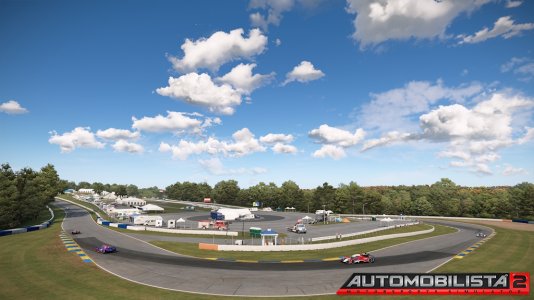I have been working on "the definitive C5 Corvette mod"... but with the AC 1.9 sound update revelations about Kunos yet again breaking modded cars I may switch over the rF2 instead. But either way, here is a little teaser LOL.
Each years correctly badged and detailed Fixed Roof Coupe (1999 & 2000) C5 Z06 (385bhp 2001 & 2002, 2003 & 2004 405bhp versions) - with 50th anniversary details, 2004 Z16 version all in stock form with fast street setup and slick tire hard cor setups as well as lots of different real world modded C5 Corvettes.
Then maybe I will also do the Coupe and Vert versions as those 3d models are ready.
The 2001 Speedworld Challenge Z06's are also ready to go.
My chassis notes & photos & measurements






The 385bhp 2001 C5 Z06 WIP



Speed TV World Challenge Series Z06

I am about 100 hours into the mod... using lots of access to real data, C5 Speed TV World SAE aero white paper, real cars, experience and custom made and purchased 3D models as well as multiple engine type recordings (stock LS6, modded LS1 & LS6, modded LS7, roots blower, centrifugal blower, stock pipes, long tube headers, Borla exhaust, Billy Boats, Corsa. But if Kunos is going to keep breaking the core game why bother?
Although to be honest, as I have been working with real chassis data I have noticed that the AC physics engine is very very very far from being a real representation of real world physics using real world chassis data.
I have had to alter the chassis layout of the C5 Corvette just to match the bizarre behaviour of the AC physics engine. Then when I make well documented changes to the setup, the AC car does not behave the way real cars do.
I guess I will just keep my install at 1.8.1 and finish the mod for personal use, as there is no way I will keep chasing Kunos moving sound goal posts.
Each years correctly badged and detailed Fixed Roof Coupe (1999 & 2000) C5 Z06 (385bhp 2001 & 2002, 2003 & 2004 405bhp versions) - with 50th anniversary details, 2004 Z16 version all in stock form with fast street setup and slick tire hard cor setups as well as lots of different real world modded C5 Corvettes.
Then maybe I will also do the Coupe and Vert versions as those 3d models are ready.
The 2001 Speedworld Challenge Z06's are also ready to go.
My chassis notes & photos & measurements






The 385bhp 2001 C5 Z06 WIP



Speed TV World Challenge Series Z06

I am about 100 hours into the mod... using lots of access to real data, C5 Speed TV World SAE aero white paper, real cars, experience and custom made and purchased 3D models as well as multiple engine type recordings (stock LS6, modded LS1 & LS6, modded LS7, roots blower, centrifugal blower, stock pipes, long tube headers, Borla exhaust, Billy Boats, Corsa. But if Kunos is going to keep breaking the core game why bother?
Although to be honest, as I have been working with real chassis data I have noticed that the AC physics engine is very very very far from being a real representation of real world physics using real world chassis data.
I have had to alter the chassis layout of the C5 Corvette just to match the bizarre behaviour of the AC physics engine. Then when I make well documented changes to the setup, the AC car does not behave the way real cars do.
I guess I will just keep my install at 1.8.1 and finish the mod for personal use, as there is no way I will keep chasing Kunos moving sound goal posts.
Last edited:













